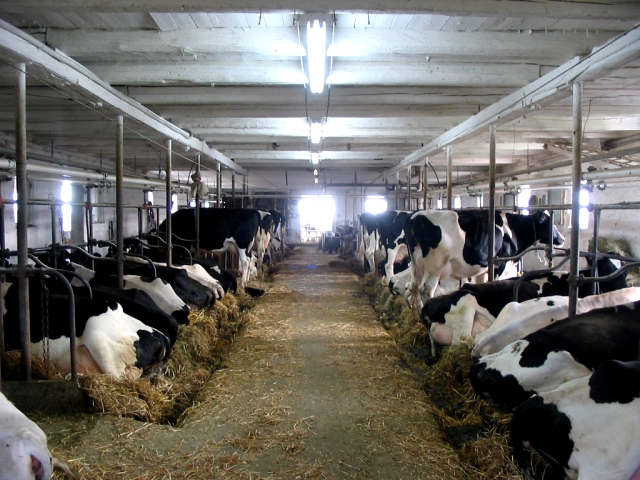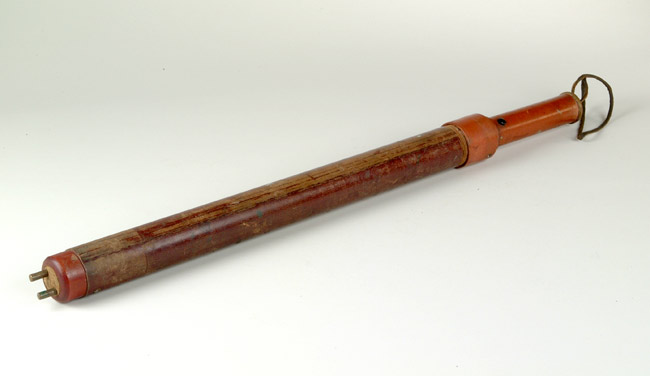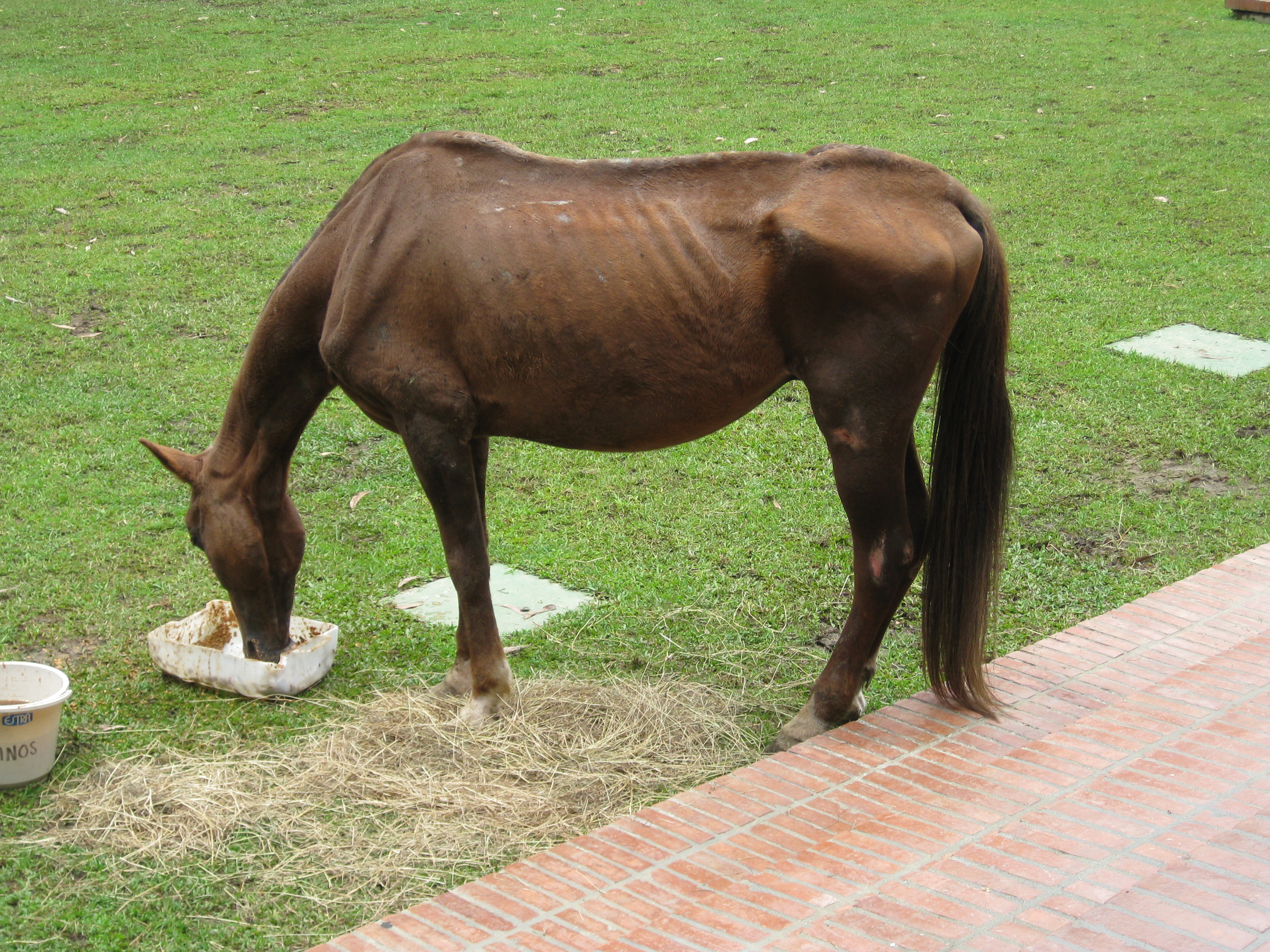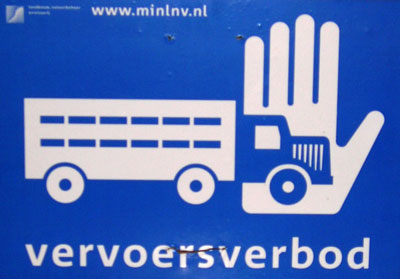|
Dairy Farming In Canada
Dairy farming is one of the largest agricultural sectors in Canada. Dairy has a significant presence in all of the provinces and is one of the top two agricultural commodities in seven out of ten provinces. In 2018, there were 967,700 dairy cows on 10,679 farms across the country. Quebec and Ontario are the major dairy producing provinces, with 5,120 and 3,534 farms, which produce 37% and 33% of Canada's total milk. This is supposed to represent 8% of farmers in Canada. While dairy farming is still prominent in Canadian society, the number of dairy farms in Canada has been dropping significantly since 1971 while the size of the average farm has significantly increased to 89 cows per farm. The Canadian dairy sector contributes approximately $19.9 billion yearly to Canada's GDP, and sustains approximately 221,000 full-time equivalent jobs and generates $3.8 billion in tax revenues. On average, two-thirds of Canadian dairy produced is sold as fluid milk while the remaining one-third ... [...More Info...] [...Related Items...] OR: [Wikipedia] [Google] [Baidu] |
Cows On A Farm - By Eric Dufresne
Cattle (''Bos taurus'') are large, domesticated, cloven-hooved, herbivores. They are a prominent modern member of the subfamily Bovinae and the most widespread species of the genus ''Bos''. Adult females are referred to as cows and adult males are referred to as bulls. Cattle are commonly raised as livestock for meat (beef or veal, see beef cattle), for milk (see dairy cattle), and for hides, which are used to make leather. They are used as riding animals and draft animals ( oxen or bullocks, which pull carts, plows and other implements). Another product of cattle is their dung, which can be used to create manure or fuel. In some regions, such as parts of India, cattle have significant religious significance. Cattle, mostly small breeds such as the Miniature Zebu, are also kept as pets. Different types of cattle are common to different geographic areas. Taurine cattle are found primarily in Europe and temperate areas of Asia, the Americas, and Australia. Zebu ... [...More Info...] [...Related Items...] OR: [Wikipedia] [Google] [Baidu] |
Chicken
The chicken (''Gallus gallus domesticus'') is a domesticated junglefowl species, with attributes of wild species such as the grey and the Ceylon junglefowl that are originally from Southeastern Asia. Rooster or cock is a term for an adult male bird, and a younger male may be called a cockerel. A male that has been castrated is a capon. An adult female bird is called a hen and a sexually immature female is called a pullet. Humans now keep chickens primarily as a source of food (consuming both their meat and eggs) and as pets. Traditionally they were also bred for cockfighting, which is still practiced in some places. Chickens are one of the most common and widespread domestic animals, with a total population of 23.7 billion , up from more than 19 billion in 2011. There are more chickens in the world than any other bird. There are numerous cultural references to chickens – in myth, folklore and religion, and in language and literature. Genetic studies have poi ... [...More Info...] [...Related Items...] OR: [Wikipedia] [Google] [Baidu] |
Canadians For The Ethical Treatment Of Animals
Canadians (french: Canadiens) are people identified with the country of Canada. This connection may be residential, legal, historical or cultural. For most Canadians, many (or all) of these connections exist and are collectively the source of their being ''Canadian''. Canada is a multilingual and multicultural society home to people of groups of many different ethnic, religious, and national origins, with the majority of the population made up of Old World immigrants and their descendants. Following the initial period of French and then the much larger British colonization, different waves (or peaks) of immigration and settlement of non-indigenous peoples took place over the course of nearly two centuries and continue today. Elements of Indigenous, French, British, and more recent immigrant customs, languages, and religions have combined to form the culture of Canada, and thus a Canadian identity. Canada has also been strongly influenced by its linguistic, geographic, and ... [...More Info...] [...Related Items...] OR: [Wikipedia] [Google] [Baidu] |
Society For The Prevention Of Cruelty To Animals
A Society for the Prevention of Cruelty to Animals (SPCA) is a common name for non-profit animal welfare organizations around the world. The oldest SPCA organization is the RSPCA, which was founded in England in 1824. SPCA organizations operate independently of each other and campaign for animal welfare, assist in the prevention of cruelty to animals cases. SPCA organizations by continent Africa * Botswana — Botswana Society For The Prevention Of Cruelty To Animals (BSPCA) * Egypt — General/Cairo SPCA ** ''Branches all over Egypt, Cairo SPCA is the oldest association in Africa and the Middle East, established in 1895''. * Kenya — Kenya Society for the Protection and Care of Animals (KSPCA) * Namibia — Tierschutzverein (SPCA) Swakopmund *South Africa ** National Council of SPCAs ( NSPCA) **Cape Town — Cape of Good Hope Society for the Prevention of Cruelty to Animals *Zimbabwe — Zimbabwe Society for the Prevention of Cruelty to Animals Asia *Lahore, Pakistan � ... [...More Info...] [...Related Items...] OR: [Wikipedia] [Google] [Baidu] |
Animal Slaughter
Animal slaughter is the killing of animals, usually referring to killing domestic livestock. It is estimated that each year 80 billion land animals are slaughtered for food. Most animals are slaughtered for food; however, they may also be slaughtered for other reasons such as for harvesting of pelts, being diseased and unsuitable for consumption, or being surplus for maintaining a breeding stock. Slaughter typically involves some initial cutting, opening the major body cavities to remove the entrails and offal but usually leaving the carcass in one piece. Such dressing can be done by hunters in the field (field dressing of game) or in a slaughterhouse. Later, the carcass is usually butchered into smaller cuts. The animals most commonly slaughtered for food are cattle and water buffalo, sheep, goats, pigs, deers, horses, poultry (mainly chickens, turkeys, ducks and geese), insects (a commercial species is the house cricket), and increasingly, fish in the aquaculture indu ... [...More Info...] [...Related Items...] OR: [Wikipedia] [Google] [Baidu] |
Cattle Prod
A cattle prod, also called a stock prod or a hot stick, is a handheld device commonly used to make cattle or other livestock move by striking or poking them. An electric cattle prod is a stick with electrodes on the end which is used to make cattle move via a relatively high-voltage, low-current electric shock. The electric cattle prod is said to have been invented by Texas cattle baron Robert J. Kleberg, Jr. of the King Ranch around 1930, although versions were sold as early as 1917. Electric prods A hotshot is typically cylindrical, and can carry an open electric current at the "shock end" when activated. The electric current at the shock end runs through two metal electrodes. Anything that touches the electric current receives a high- voltage low-current shock, not strong enough to kill a human or a large animal such as a cow or sheep from short-term exposure, but strong enough to cause significant pain. The electric cattle prod is designed to inflict a painful shock ... [...More Info...] [...Related Items...] OR: [Wikipedia] [Google] [Baidu] |
Overview Of Discretionary Invasive Procedures On Animals
Numerous procedures performed on domestic animals are usually more invasive than purely cosmetic alterations, but differ from types of veterinary surgery that are performed exclusively for urgent health reasons. Such procedures have been grouped together under the technical term ' mutilatory' by the Royal College of Veterinary Surgeons in a report describing the reasons for their being conducted and their welfare consequences, and by others. The term ''mutilatory'' generally connotes some form of disfigurement or even maiming. There are multiple definitions and interpretations that carry varying degrees of emotional intensity. Merriam-Webster defines "mutilate" as "to cut up or alter radically so as to make imperfect", but gives a relatively mild example: "the child mutilated the book with his scissors". Animal rights advocates often pejoratively refer to these procedures as ''mutilations.'' PETA states that one issue with current forms of non-human animal treatment is that th ... [...More Info...] [...Related Items...] OR: [Wikipedia] [Google] [Baidu] |
Veal
Veal is the meat of calves, in contrast to the beef from older cattle. Veal can be produced from a calf of either sex and any breed, however most veal comes from young male calves of dairy breeds which are not used for breeding. Generally, veal is more expensive by weight than beef from older cattle. Veal production is a way to add value to dairy bull calves and to utilize whey solids, a byproduct from the manufacturing of cheese. Definitions and types There are several types of veal, and terminology varies by country. Similar terms are used in the US, including calf, bob, intermediate, milk-fed, and special-fed. Culinary uses In Italian, French and other Mediterranean cuisines, veal is often in the form of cutlets, such as the Italian '' cotoletta'' or the famous Austrian dish Wiener Schnitzel. Some classic French veal dishes include fried '' escalopes'', fried veal ''Grenadines'' (small, thick fillet steaks), stuffed '' paupiettes'', roast joints, and ... [...More Info...] [...Related Items...] OR: [Wikipedia] [Google] [Baidu] |
Cruelty To Animals
Cruelty to animals, also called animal abuse, animal neglect or animal cruelty, is the infliction by omission (neglect) or by commission by humans of suffering or harm upon non-human animals. More narrowly, it can be the causing of harm or suffering for specific achievements, such as killing animals for entertainment; cruelty to animals sometimes encompasses inflicting harm or suffering as an end in itself, referred to as zoosadism. Divergent approaches to laws concerning animal cruelty occur in different jurisdictions throughout the world. For example, some laws govern methods of killing animals for food, clothing, or other products, and other laws concern the keeping of animals for entertainment, education, research, or pets. There are several conceptual approaches to the issue of cruelty to animals. Even though some practices, like animal fighting, are widely acknowledged as cruel, not all people and nations have the same definition of what constitutes animal cruelty. Man ... [...More Info...] [...Related Items...] OR: [Wikipedia] [Google] [Baidu] |
Bovine Somatotropin
Bovine somatotropin or bovine somatotrophin (abbreviated bST and BST), or bovine growth hormone (BGH), is a peptide hormone produced by cows' pituitary glands. Like other hormones, it is produced in small quantities and is used in regulating metabolic processes. Recombinant bovine somatotropin (usually "rBST"), is a synthetic version of the bovine growth hormone given to dairy cattle by injection to increase milk production. Synthesis After the biotech company Genentech discovered and patented the gene for BST in the 1970s,Keith Schneider. 10 June 1990"Betting the Farm on Biotech." ''the New York Times'' it became possible to synthesize the hormone using recombinant DNA technology to create recombinant bovine somatotropin (rBST), recombinant bovine growth hormone (rBGH), or artificial growth hormone. Industrial production Four large pharmaceutical companies, Monsanto, American Cyanamid, Eli Lilly, and Upjohn, developed commercial rBST products and submitted them to the US ... [...More Info...] [...Related Items...] OR: [Wikipedia] [Google] [Baidu] |
Health Canada
Health Canada (HC; french: Santé Canada, SC)Health Canada is the applied title under the Federal Identity Program; the legal title is Department of Health (). is the department of the Government of Canada responsible for national health policy. The department itself is also responsible for numerous federal health-related agencies, including the Canadian Food Inspection Agency (CFIA) and the Public Health Agency of Canada (PHAC), among others. These organizations help to ensure compliance with federal law in a variety of healthcare, agricultural, and pharmaceutical activities. This responsibility also involves extensive collaboration with various other federal- and provincial-level organizations in order to ensure the safety of food, health, and pharmaceutical products—including the regulation of health research and pharmaceutical manufacturing/testing facilities. The department is responsible to Parliament through the minister of health—presently Jean-Yves Duclos— ... [...More Info...] [...Related Items...] OR: [Wikipedia] [Google] [Baidu] |
Biosecurity
Biosecurity refers to measures aimed at preventing the introduction and/or spread of harmful organisms (e.g. viruses, bacteria, etc.) to animals and plants in order to minimize the risk of transmission of infectious disease. In agriculture, these measures are aimed at protecting food crops and livestock from pests, invasive species, and other organisms not conducive to the welfare of the human population. The term includes biological threats to people, including those from pandemic diseases and bioterrorism. The definition has sometimes been broadened to embrace other concepts, and it is used for different purposes in different contexts. The COVID-19 pandemic is a recent example of a threat for which biosecurity measures have been needed in all countries of the world. Background and terminology The term "biosecurity" has been defined differently by various disciplines. The term was first used by the agricultural and environmental science, environmental communities to descr ... [...More Info...] [...Related Items...] OR: [Wikipedia] [Google] [Baidu] |





.jpg)



